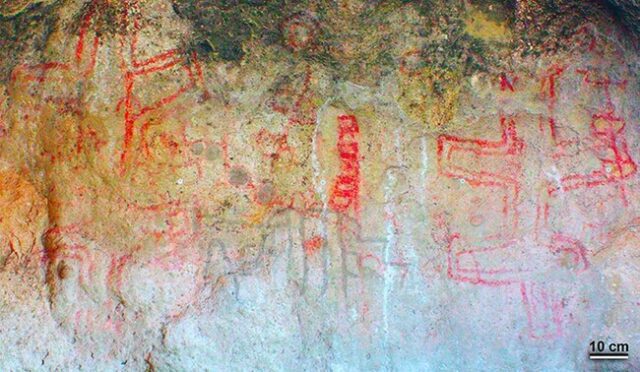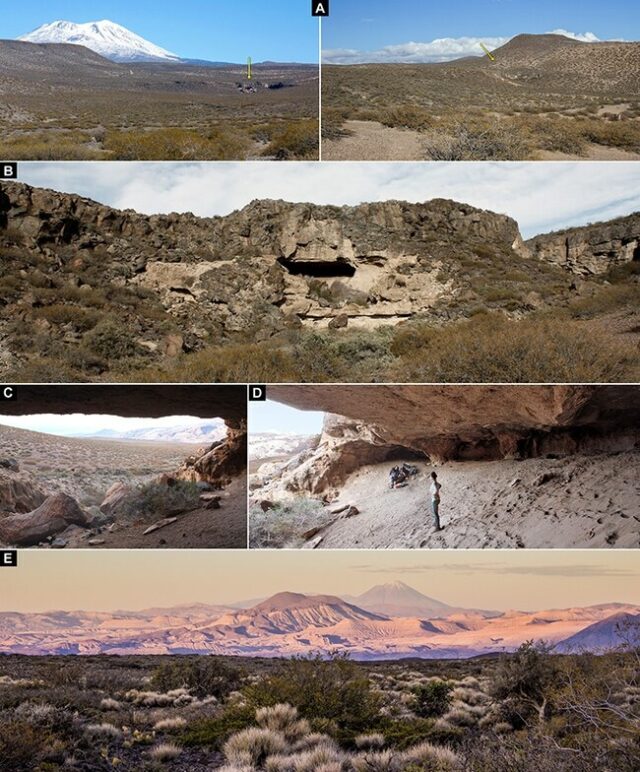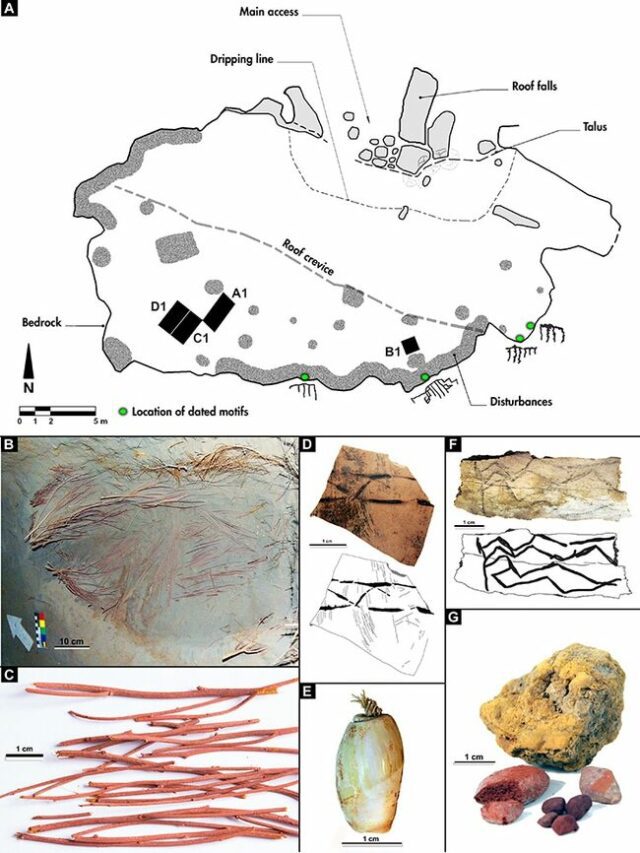
The discovery of 8,200-year-old cave art in Patagonia’s Cueva Huenul 1 (CH1) in South America has shed light on ancient human activities and the environmental conditions they faced. The 895 paintings found in the cave, along with artifacts like shell beads, decorated animal bones, and engraved gourds, represent evidence of early human settlements at the southern tip of the continent, dating back approximately 12,000 years. Carbon dating using accelerator mass spectrometry on charcoal within the drawings revealed their age, with the “comb”-shaped black sketches estimated to be 8,171 years old. The diversity of drawings, including abstract, human, and animal figures, suggests that these artworks were created throughout 130 generations by a thinly distributed and highly mobile hunter-gatherer population.

The ancient climate of the region during the mid-Holocene, around 10,000 to 7,000 years ago, was characterized by aridity. The research indicates that human populations did not experience significant growth during this period, and there may have been periodic population crashes rather than long-term stability. Ramiro Barberena, a co-author of the paper, highlighted that the sites from the mid-Holocene did not show intense occupations, implying that small human groups likely moved across wider areas. The cave art in Patagonia not only provides a glimpse into the creative expressions of ancient humans but also offers valuable insights into their adaptive strategies in response to environmental conditions, contributing to our understanding of the region’s earliest inhabitants.
















